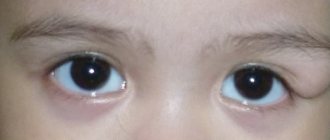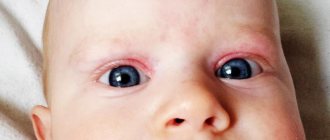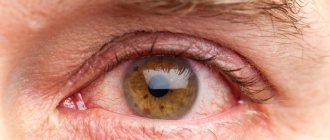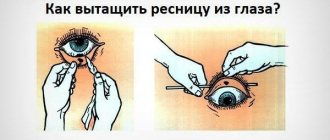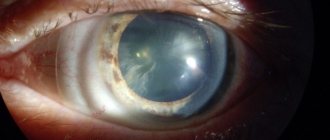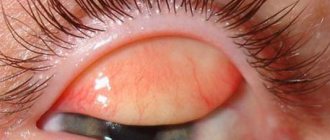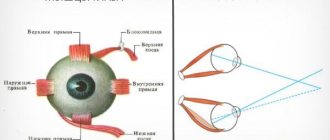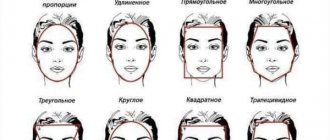Allergic edema: causes
This pathology appears due to the body's reaction to an irritating substance.
Allergies, swollen eyes, as well as redness of the eyelids and whites of the eyes occur under the influence of the following factors:
- Cosmetics and hygiene products (foams, lotions, shampoos, eye shadows and pencils, mascara).
- Flowers, fluff and plant pollen.
- Toxins that enter the bloodstream from the bites of bees, bumblebees, wasps, mosquitoes, ants, and so on.
- Reaction to exposure to sunlight.
- Allergies to food (fruits and vegetables, honey, milk, fish, shellfish, berries, seasonings, sweets).
- Allergic reaction to feathers, down, fur of pets.
- Perfume, deodorant, eau de toilette.
- Paints, glue, detergents.
- Taking certain medications (most often hormonal drugs and antibiotics).
- The impact of bacteria and viruses on the gastrointestinal tract.
Only a doctor can determine the specific substance that causes swelling of the eyes. To do this, you need to do laboratory tests - allergy tests. Once the cause has been established, it is necessary to adhere to the treatment prescribed by the specialist and avoid or limit interaction with the allergen as much as possible.
Causes
With a weakened protective barrier, the body becomes sensitive to a variety of substances that, at first glance, do not cause suspicion at all. A person can be affected by:
- mown grass and plant pollen;
- new food products introduced into the diet;
- house and street dust;
- insect bites;
- pet hair;
- medicines and cosmetics;
- household chemicals or environmental compounds;
- various microorganisms;
- influence of UV rays.
These are the allergens that are most common. It may be difficult to identify allergic compounds due to their wide variety.
Sometimes inadequate reactions in the form of edema occur due to hypothermia, physical impact (injury to the eye), or the use of contact lenses in everyday life. Allergens can be introduced with dirty hands when handling contact lenses.
Signs of illness
Typically, if an allergy occurs, the eyes become itchy and swollen. But this condition is also characterized by such manifestations as:
- Pale or bluish tint of the skin.
- Increased sensitivity to light.
- Tearing, sometimes nasal discharge.
- Fever, fatigue and lethargy.
As a rule, swelling affects one eye, but sometimes both. Swelling is usually not accompanied by pain, since there is no mechanical damage to the skin and mucous membranes. If a person has allergies and swollen eyes, he is bothered by severe itching, which gets worse at night. In rare cases, swelling will go away on its own, about two days after it appears. Sometimes it persists for a long time or even intensifies. In any case, you should not expect that symptoms such as allergies and swollen eyes will go away on their own. If these diseases are left unattended, you do not consult a doctor and do not follow the recommendations given by him, more serious pathologies may arise.
Allergy complications
One of the most dangerous consequences of this disease is angioedema, which poses a direct threat to human life, as it can cause asphyxia. This complication is provoked by a high concentration of a foreign substance in the patient’s blood. With Quincke's edema, not only the eyelids, but also the cheeks and throat swell.
If symptoms such as allergies, swollen eyes are present, and a person does not take measures to combat this pathology, complications such as impaired blood supply to the eyeball may appear. At the same time, the patient's vision deteriorates sharply.
If a person scratches the eyes too often and too hard, bacteria and viruses enter them, leading to inflammation.
With severe swelling on the front membrane of the eye, a thickening or pathological process of connective tissue may develop.
Treatment
In most cases, Quincke's edema of the eyes goes away very quickly and without medical intervention. However, in case of relapse, the situation may be more acute and have some complications (in rare cases, allergies can cause blurred vision or even blindness).
That is why treatment of the disease should only take place under the supervision of a specialist. After an examination and some tests, the allergist will select the optimal treatment for you and tell you what to do next. In most cases, the patient is prescribed complex treatment.
Antihistamine tablets
Antihistamines and medications for angioedema are necessary to reduce the amount of histamine in the blood, which appears due to the immune response to an allergen from the external environment. The main role in treatment is to alleviate manifest allergies, reduce swelling of the mucous membrane, prevent a decrease in blood pressure and have a soporific effect.
Angioedema in children and adults is treated with a well-known medicine - Suprastin. After taking it, the patient feels better due to the substance described above being reduced in the blood. The main task is to block histamine receptors and prevent the appearance of symptoms of an allergic reaction.
Usually, the doctor prescribes complex therapy along with an antihistamine in order to relieve the patient from the negative effects of edema as quickly as possible. Suprastin is used in the form of injections for the treatment of Quincke syndrome. The allergy is eliminated 25 minutes after taking the product. The medicine works within 24 hours.
Injections
A particularly difficult case is when antihistamine therapy does not bring the desired effect. Then, for Quincke's edema, Prednisolone or Dexamethasone is prescribed. The full course consists of taking 50 mg of the active substance per day.
The main properties of the drug are the elimination of shock and allergies. When a ballroom person takes medication, adrenaline enters the bloodstream. Therefore, the blood vessels narrow and blood pressure rises.
Hormonal anti-edema agents suppress the immune response to an allergen that the body cannot tolerate, as a result of which cell destruction stops. The irritant does not enter the body, and the swollen area is restored.
Prednisolone is injected once into the veins or muscles. Then a course of medical therapy is prescribed - tablets are prescribed to be taken 4 times a day. General treatment with the drug is indicated for no more than 10 days.
Prednisolone is a strong medicine that acts instantly for angioedema. Therefore, you should follow the instructions for use and set the dosage correctly.
Sorbents
If angioedema occurs in the eyes, before emergency medical help arrives, it is recommended to take sorbents such as activated or white carbon or Enterosgel. These drugs are able to absorb part of the allergen, thereby the swelling appears a little less.
Antiallergic eye drops
A good remedy for eliminating the symptoms of Quincke's edema are eye drops that help relieve burning and itching. Effective eye drops are:
- Visin Alergy;
- Okuflesh;
- Nakwan;
- Broxinac;
- Lecrolin;
- Polynadim.
Traditional methods
Salt, as everyone knows, can remove moisture and water, so when treating Quincke's edema, it is recommended to make saline solutions. To do this, you need to dilute one tablespoon of table salt in one liter of water. Compresses should be done twice a day, but rather carefully so as not to get into the eyes.
If there is no personal allergy to these two ingredients, treatment with soda and milk is allowed. Gently warm the milk into which the soda is delivered, using a dosage at the very tip of a kitchen knife. Drink up to 3 times a day until all known symptoms subside.
Nettle roots have been used in past centuries to relieve many different types of allergies. Exactly 2 tablespoons of roots are poured with a whole liter of clean boiling water, covered well and kept for exactly 2 hours. Take only after straining, 2-3 tablespoons no more than 3 times a day.
First aid
If there is a suspicion that a person is having a severe allergic reaction and possibly Quincke's edema is beginning, you should immediately call an ambulance. Before doctors arrive, you need to give the patient as much fluid as possible so that the foreign substance quickly leaves the body cells. If a person has previously experienced allergic reactions (itching, redness of the skin, runny nose, sneezing and coughing), he should take the medications prescribed by the doctor. It is not recommended to make lotions from tea leaves or medicinal herbs, as they can increase swelling.
In some cases, if a severe allergy occurs on the face or the eyes are swollen, the doctor prescribes an examination in a hospital setting to determine the cause of the pathology and relieve the acute condition. As a rule, the diagnosis in this case is not difficult, but it needs to be done. To do this, you need to undergo a series of tests (blood and urine tests), as well as visit an ENT specialist, a general practitioner and an allergy treatment specialist. Determining the substance that provoked the body’s negative reaction is an integral stage of patient therapy.
What are the dangers of eye swelling due to allergies?
With sudden and rapidly progressing swelling, it can develop into Quincke's edema, which manifests itself in inflammation of other mucous membranes (nasopharynx, tongue), as well as severe redness of the skin. The reaction to the allergen is sometimes so strong that the eye can close completely and even suffocate. Such symptoms are not uncommon with insect bites (midges, bees, wasps). In addition, allergic edema can spread to the cornea, iris, optic nerve, and uveal tract. If emergency measures are not taken, this can lead to serious visual impairment.
MagazinLinz.ru team
Treatment methods
If a person has swollen eyes and allergies, what to do in this case? What measures should be taken to relieve symptoms?
Allergy to the eyes is a very common pathology; it occurs in both adults and children. Causes it to enter the body of a foreign substance. It can penetrate both through the blood and through the gastrointestinal tract. Allergy symptoms are relieved with antihistamines, which neutralize the effect of the irritating component on human organs and systems. Such drugs include, for example, Lomilan, Clarisens, Erius, Cetrin, Loratadine, Tavegil, Claritin.
To reduce itching and swelling of the eyes, drops (Alomid, Ketotifen, Lecrolin) and hormonal ointments (Dexamethasone, Celestoderm) are usually used. These products contain hormones and should only be used as directed by a doctor. If the allergy is accompanied by excessive tearing and irritation of the membranes of the eyes, you can use drops to constrict blood vessels (Naphthyzin or Vizin). Systane and Vidisic help relieve the feeling of dryness. If wounds appear on the skin of the eyelids and it begins to peel off, you should use ointments based on lanolin or glycerin, as well as antimicrobial and disinfectants. In a situation where an allergy appears, the eyes itch and swell, how to treat it, what means to use - it is better to consult a specialist.
Symptoms
Many people begin to self-medicate, but at the same time they are not exactly sure that they are faced with allergic eye swelling. It should be noted that Quincke's edema is always accompanied by the same symptoms, so identifying it is actually quite easy.
Based on these symptoms, you can determine the presence of Quincke's edema of the eyes:
- Itching. This is the first thing that should alert you. No matter how much your eyes itch, do not touch them under any circumstances, otherwise you may get an infection and only worsen the situation;
- The appearance of a burning sensation. Occurs approximately an hour and a half after the onset of Quincke's edema itself, often becoming more severe when blinking;
- Increased photosensitivity. If you have an allergy to your eyes, bright sunlight and even ordinary lamps and chandeliers can provoke quite unpleasant sensations and discomfort in you. It is possible that a headache may occur;
- Severe redness. Quincke's edema is always accompanied by redness of the eyelid. This happens due to the fact that increased blood flows into this place;
- Swelling. A swelling on the eyelid can form either immediately or after a few hours. If the swelling is very severe, this may indicate an infection in the eye.
IMPORTANT! Keep in mind that all of these symptoms can occur in both eyes or just one. If, with all these symptoms, pus is released, then going to the doctor should definitely not be postponed. This indicates the presence of internal inflammation in the body.
Associated symptoms of the disease
In most cases, the disease is accompanied by the following symptoms, which may intensify given the complications of the disease:
- absence of pain;
- eyes constantly itch, some patients note increased itching in the evening and at night;
- usually the disease manifests itself on one side, in rare cases it affects both eyes;
- the skin on the affected area may become pale, in some cases a bluish tint appears;
- severe lacrimation, which may be complicated by a runny nose;
- photophobia;
- burning in the eyeball and in the eyelid area;
- redness of the white and surrounding skin;
- the area under the eye swells;
- swelling develops quickly, sometimes it goes away on its own within 12-24 hours;
- In particularly sensitive patients, there is also a deterioration in their general condition, in the form of chills, fatigue and drowsiness.
Useful video
Quincke's edema. How not to die from allergies:
Causes of eye swelling in children
If a child experiences swelling of the eyelids and redness of the skin, the following factors could contribute to this:
- Mechanical damage.
- Diseases of a bacterial or viral nature.
- Allergies (to pollen, dust, food, feathers and fur of pets, cleaning products, etc.).
- Kidney pathologies.
- Intracranial pressure disorders.
- Heart diseases.
- Sleep disorders.
- Acute respiratory disease.
If the eyes are swollen, the child’s allergies may also be accompanied by symptoms such as increased lacrimation, runny nose, and cough. If complications occur, the face and throat swell.
Eye diseases and injuries in children
Edema may be associated with the presence of pathological processes such as:
- Inflammation of the connective membrane of the eye (manifested by redness, lacrimation, purulent discharge).
- Inflammation of the eyelash bulbs (severe and painful swelling of the tissue, redness of the skin).
- Cellulitis (accompanied by pain and swelling of the eyelids, high fever).
- Insect bites (toxins entering the eye and skin of the eyelid, causing redness and tearing, as well as intense itching).
- Injuries (entry of foreign bodies: particles of earth, dust, lime, powder, and so on provokes eye irritation).
If unpleasant symptoms occur, the question arises: if an allergy occurs, the child’s eyes are swollen, what to do.
Therapy methods
If itching occurs, you need to ensure that the child scratches his eyes as little as possible, as this can lead to such serious consequences as mechanical damage and infection.
Trying to eliminate symptoms such as allergies and swollen eyes on your own is highly discouraged.
If these signs appear in a child, you should consult a doctor. If, as a result of the examination, the diagnosis of “allergy” is confirmed, the specialist will prescribe appropriate therapy. Typically, in such cases, antiallergic drugs are prescribed (for example, Fenistil, Loratadine or Tavegil drops), as well as adsorbents - medications for removing harmful substances from the body.
It must be remembered that if swelling of a child’s eyes is not accompanied by lacrimation and itching, this is most likely a sign of kidney or heart pathology. In this situation, a comprehensive examination and treatment is necessary.
Sometimes irritation, swelling and itching are associated with eye injury. Then the child needs urgent medical attention, since mechanical damage can lead to decreased or even complete loss of vision. Depending on the situation, the doctor either removes the foreign body and disinfects the eye, or prescribes agents that speed up the healing process.
In the presence of an inflammatory process, ointments (erythromycin, tetracycline), as well as lotions with calendula and chamomile extract are prescribed.

